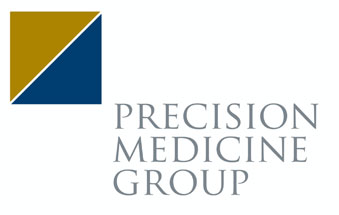We hope you are well and were able to enjoy some much deserved downtime after a very busy JP Morgan. This may have been an entirely different conference – and believe us, we really missed seeing you all in the halls of the Marker, on the streets of Union Square, and Tuesday night at the San Francisco Art Exchange – but it was an incredibly productive one all the same. In fact, across Stern IR clients we scheduled just as many meetings, with just as many investors and analysts as we’re used to coordinating in person…and we’re hearing that many of you preferred the efficiency of an all virtual experience. As always, we thank you for your partnership in making this event so successful.
As we look to the rest of 2021, we are starting to think about other virtual events we can host, above and beyond what our banking partners already offer. We welcome your thoughts! Please share any feedback on JP Morgan with our team, so that we can take into account your perspectives on what works (and what doesn’t), and so that we can help facilitate events that are of the greatest value and benefit to you.
BioCentury’s Look Ahead to 2021:
BioCentury published its annual financial markets preview over the weekend, suggesting that the incredible momentum we saw in 2020 just might be here to stay. One of the major reasons? Maturation of the sector:
- More “investable” companies: In just five years, biotech has expanded from a cohort of less than 400 “investable” companies – commonly defined as those with a market cap above $200M – into a group with 336 biotechs valued above $1B (or 372, if including large pharma). Similarly, at the end of 2020, there were 97 biotechs with market caps above $5B, versus just 36 in 2015.
- More revenue stories with more generalist appeal: As more mid-sized companies begin to commercialize products on their own, their stories become more easily understood by a broader range of investors, who prefer to evaluate revenues and profits, rather than just assess the scientific hypotheses underlying early stage pipelines.
- More firms dedicated to the healthcare sector: The healthcare specialist buyside has grown in parallel with industry, with portfolio managers starting their own funds or building out infrastructure within existing funds to become more active in the biotech space.
BioCentury also let us know just how hot the financing markets were in 2020, which was – by all accounts and measures – a record breaking year. Specifically:
- IPOs: 148 companies went public, raising over $33.9B for an average of $228.9M/deal. According to BioCentury, this aggregate amount is nearly triple the previous record, when we saw 100 companies raise $11.9B in 2019. And these companies performance remarkably well in the after-market; for the year, new IPOs were up an average of 74%.
- Follow-ons: 285 companies raised $47.2B in follow-on capital, a 60% jump from the previous annual high in 2015, when 203 companies raised $29.6B.
- Venture Deals: $33.9B was raised across more than 700 separate rounds, raising the previous peak in 2018 by $7B.
- SPACs: At least 21 healthcare-focused SPACs raised more than $3.8B.
“Primary Direct Floor Listings:” Yet Another Alternative to IPOs?
Late in December, the SEC approved a new NYSE rule, allowing companies to raise money by selling common shares in registered direct offerings. According to a summary put out by Morgan Lewis (available in full here), the revised rules will allow companies to go public through a primary direct listing on the NYSE, or a “Primary Direct Floor Listing.” The minimum listing requirements include either that the company (1) sell shares worth at least $100M during the direct listing, or (2) if the company will be selling shares worth less than $100M, that the aggregate value of the shares sold and the shares that are publicly held after the offering collectively exceed $250 million.
Logistically speaking, in these types of listings, companies sell shares of common stock to the general public in an auction on the first day of trading, instead of to a subset of investors through an underwriter. This has some practical benefits –the offering can be carried out at much less cost and with fewer restrictions than a traditional, underwritten IPO; there are no underwriting fees and no lock-up periods. But, at the same time, since underwriters will not be purchasing the offered securities directly from the issuer, there is the added risk that a Primary Direct Floor Listing may be canceled due to a lack of interest in the issuer’s shares.
NASDAQ has also submitted an application to change its rules to allow primary direct listings.
Of course, it’s too soon to say just how many companies will take advantage of this new option, but we do expect to see interest grow pretty quickly as companies begin to understand the mechanics, pros and cons – as noted above, the financing environment is robust and, as we learned from the emergence of SPACs in 2020, companies are always looking for new ways to access the public markets.
ESG: Vanguard Prepares to Push for Diversity
Following similar statements made by BlackRock and State Street Global Advisors, among others, Vanguard announced in December that it may vote in the 2021 proxy season against company directors in cases where progress on board diversity falls behind market norms and expectations. Their full statement, available here, clearly outlines their expectations for board diversity and includes considerations and recommendations for boards looking to make progress.
In addition, Vanguard published a second statement, available here, outlining its expectations of companies on a range of workplace diversity, equity and inclusion matters, and explaining how its views on this topic will affect future engagement and voting. As we’ve been discussing for several months, we expect ESG issues to remain front and center as we move into the 2021 proxy season and beyond, and urge all our public clients to review their existing ESG disclosure and strategies to ensure they are in-line with industry best practice.
Market Update:
While the broader markets were somewhat volatile early this week, they ended the week strong, with the NASDAQ, DJI and S&P 500 up 3.0%, 1.0% and 1.0% respectively. The VIX was down a staggering 9%, sitting at 21.11 as of market close on 1/21. The biotech markets were generally more stable, with the NBI closing up 1%, the BTK closing down 2% and the XBI closing up 1%.
The financing markets were remarkably hot this week, with many deals pricing:
- 23 follow-ons: AcelRx ($28M), Aclaris ($96M), Stern IR Client Athira ($90M), Beam ($260M), BioNano ($200M), CareDx ($173M), Stern IR Client Chimerix ($100M), Cryoport ($235M), Stern IR Client CytomX ($100M), Dyne ($168M), Editas ($231M), Stern IR Client Fulcrum ($44M), Inovio ($151M), Invitae ($400M), Merus ($120M), Oncocyte ($25M), OncoSec ($42M), Stern IR Client Passage Bio ($154M), Precigen ($113M), ProPhase ($38M), Senseonics ($50M), Stern IR Client Syros ($76M), TCR2 ($140M).
- 3 private financings: Neurent (Series B, $25M), Vera (Series C, $80M), Verve (Series B, $94M).
Additionally, we wanted to give a shout out to the following Stern IR Clients who have successfully completed private/public financings in 2021, including:
- 2 follow-ons: Eyepoint ($15.7M), Fate ($432M).
- 2 private financings: IconOVir (Series A, $77M), Scorpion (Series B, $162M).
Finally, we have seen two IPOs price this year, which are both trading up, including:
- Cullinan ($250M) and Gracell ($209M).

